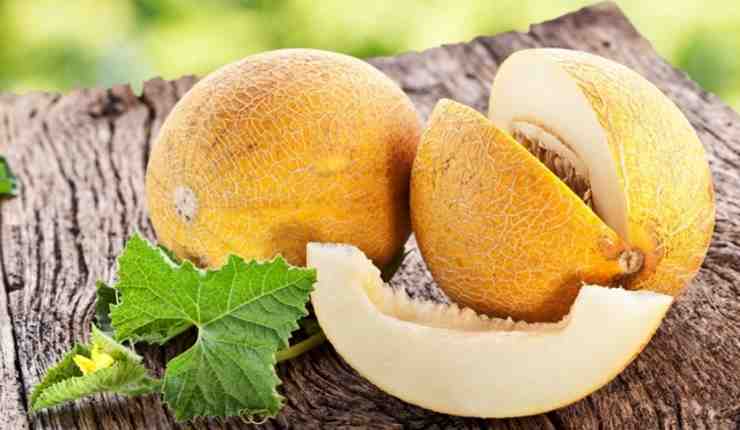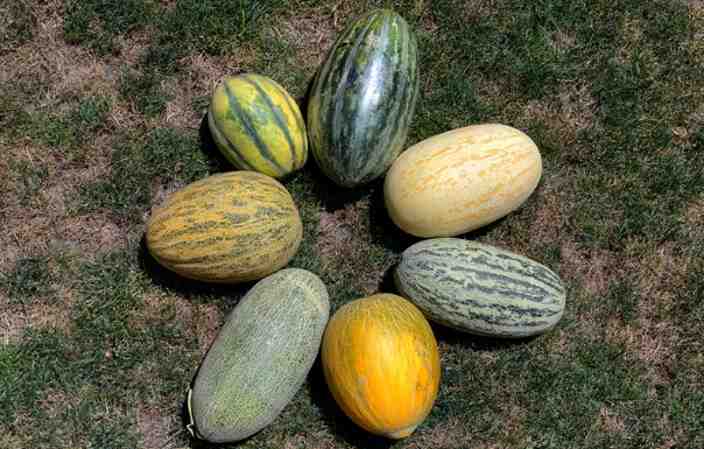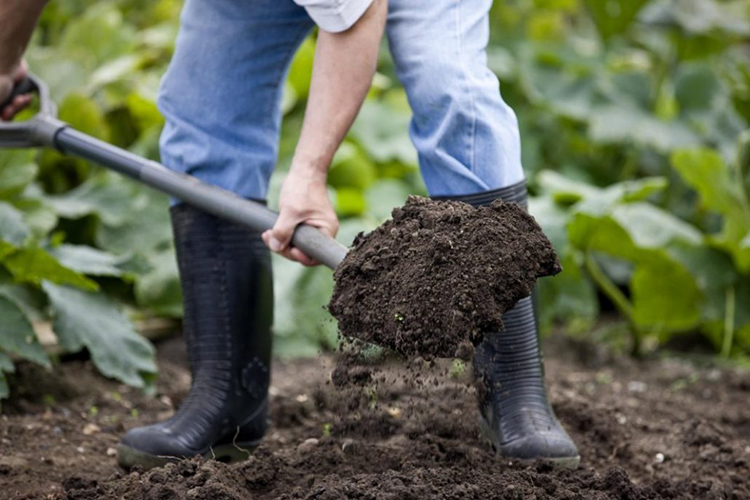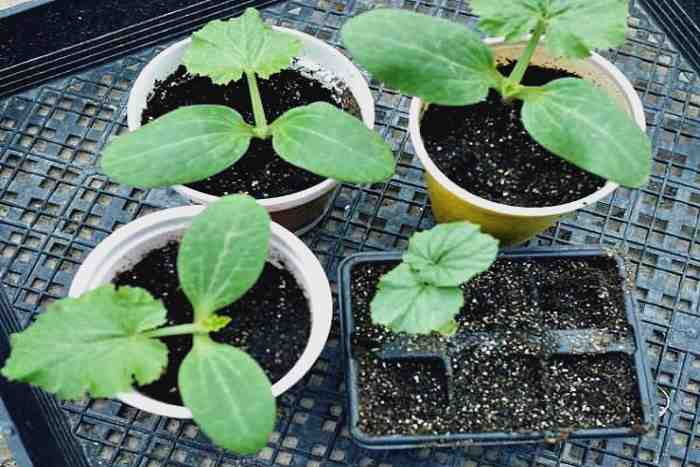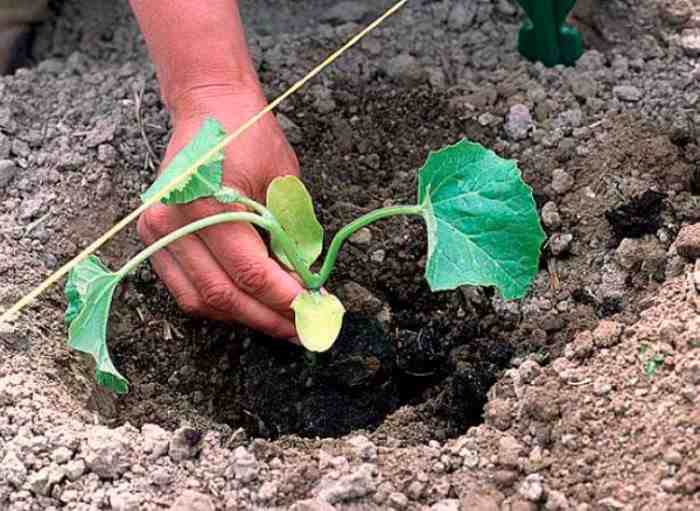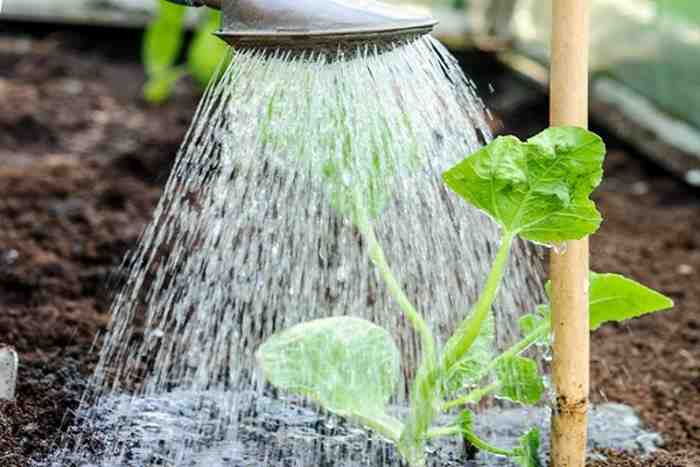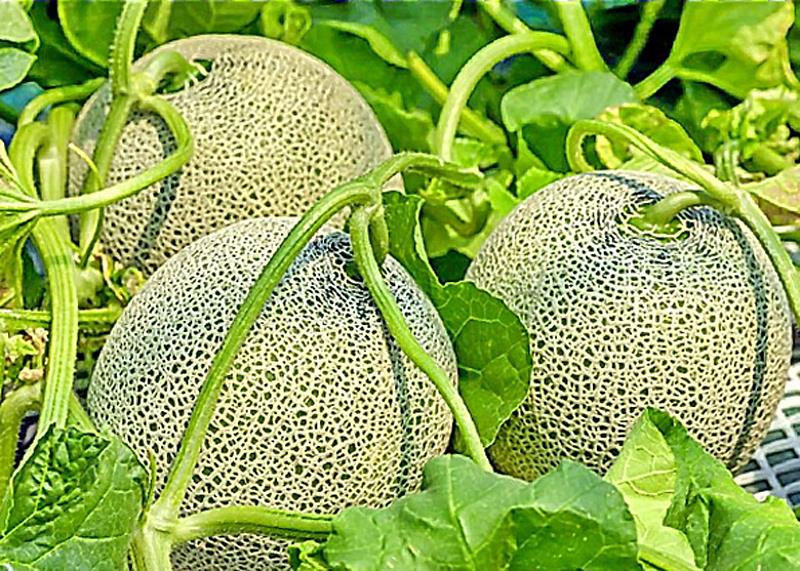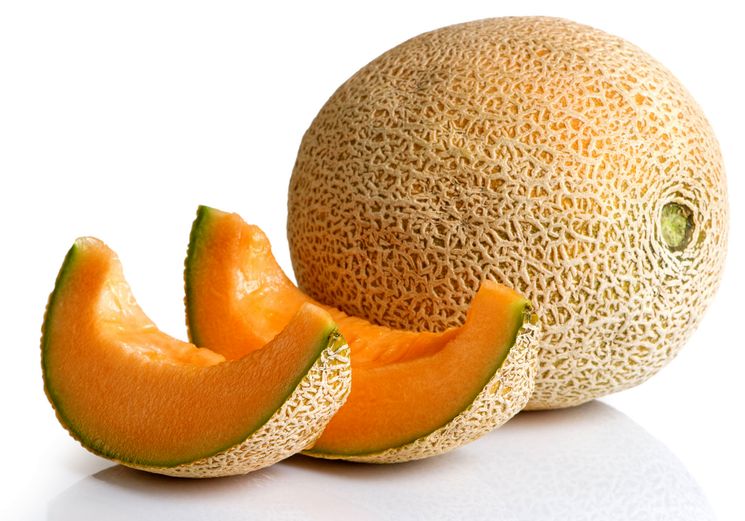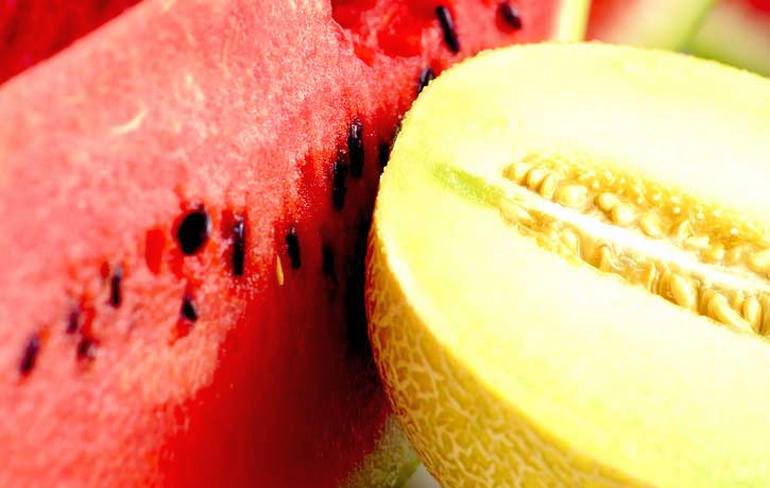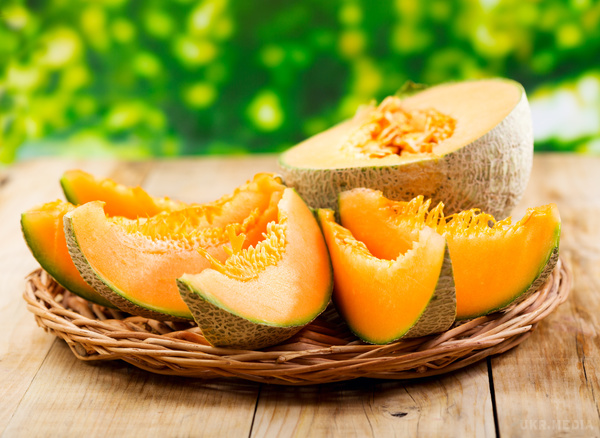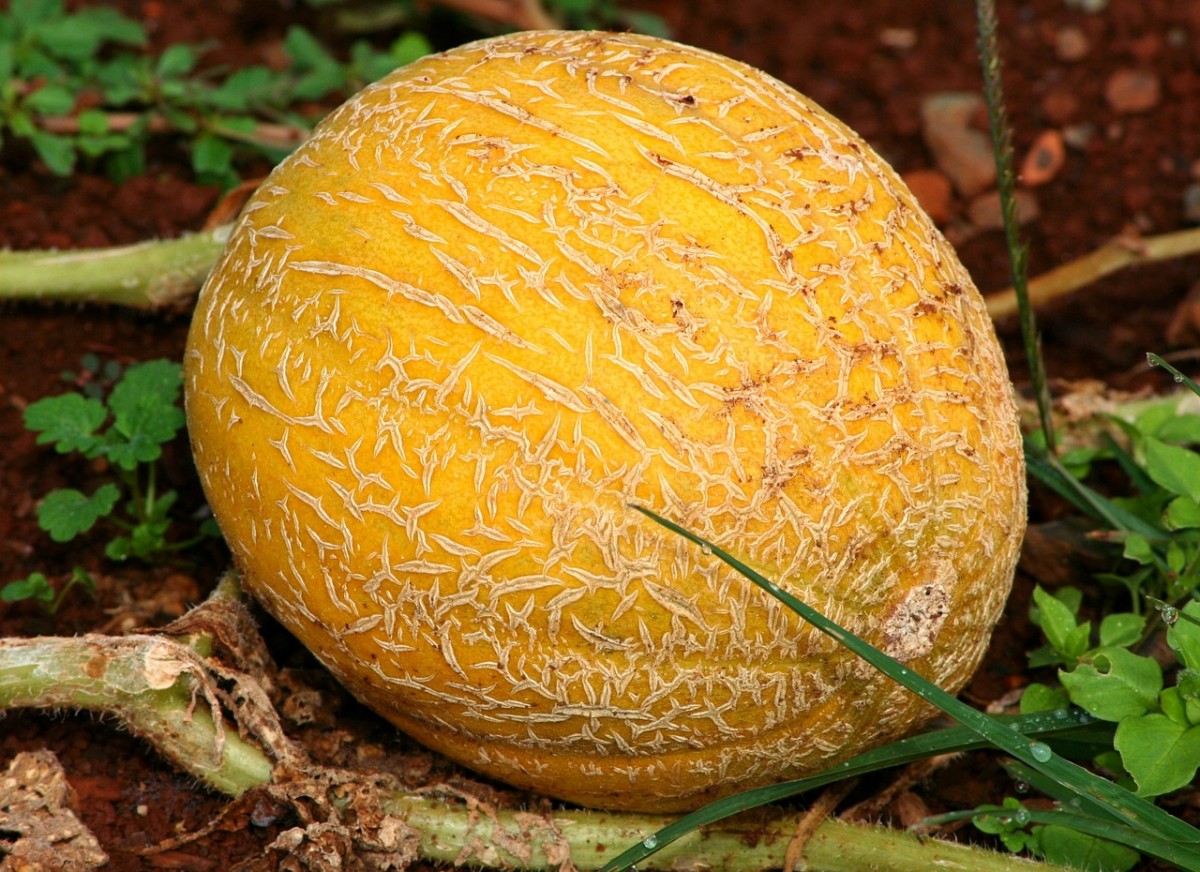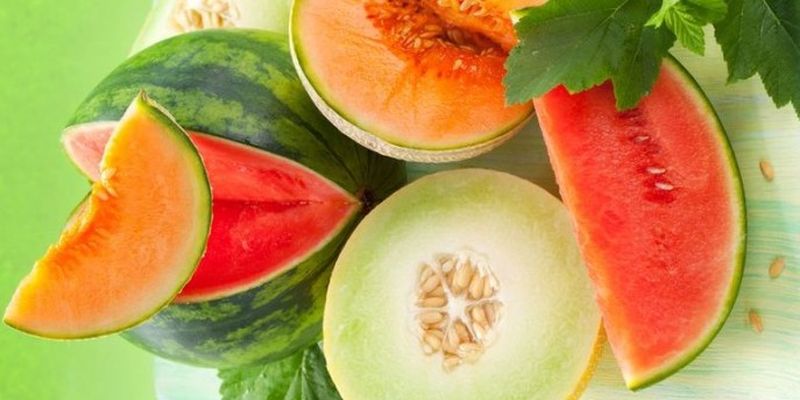Content:
In modern agriculture, special attention is paid to crops that can be used both for human food and for livestock feed. Melon is one such plant. The efficiency of its cultivation depends on compliance with agrotechnical requirements.
Preparation for growing
Melon cultivation requires a certain level of agricultural technology. So, the plant prefers sunlight and reacts poorly to an excess of moisture. Therefore, the site for its cultivation should be located on a hill, where water will not accumulate.
Knowing how the melon grows - spreading the lashes widely - it is necessary to immediately select a site with a sufficient area. If its vines do not have enough distance in their area, they will spread to neighboring ones. This can cause serious disturbances in the development of other plants, up to their death.
Selection of varieties
It is important not only to know how to grow melons correctly, but also to choose the right seed material. A good harvest cannot be obtained without the selection of the appropriate variety. It must not only be productive, but also suitable for the existing cultivation conditions.
Varieties that have become widespread in most zones (Moscow region, Nizhny Novgorod region, Central Black Earth region, Siberia, Krasnodar Territory, Rostov Region, some regions of the North):
- Torpedo;
- Collective farmer;
- Ethiopian;
- Tamansky;
- Golden;
- Delano, etc.
There are a number of varieties that are recommended for greenhouse cultivation:
- Gold of the Scythians;
- Fairy tale;
- Lada;
- Titovka;
- Krinichanka;
- Dana;
- Zlata;
- Mallet, etc.
Predecessors
The best option for growing melons would be a plot where they grew before:
- onion;
- cabbage;
- radish;
- perennial herbs;
- turnip;
- beet;
- beans.
Soil preparation
In the autumn period, the site is thoroughly dug up, and then humus is introduced there at the rate of 3-4 kg / m2. Clay soils are not suitable for cultivation, but they can be made lighter by adding half a bucket of sand to every square meter of plot area.
In the spring, it is advisable to dig up the site again and add phosphorus-potassium fertilizers to it. Immediately before planting plants, nitrogen preparations or semi-rotted manure are introduced into the soil.
Reproduction
Cultivation of melons outdoors is possible with seeds and seedlings.
Seed method
It is necessary to properly prepare the planting material. The seeds can be purchased from specialized gardening stores, or you can get them yourself from the fruit. Seed material must be large-fruited, this is one of the conditions for the future large-fruited harvest.
Before planting, the seeds must be protected from damage by various diseases. For this purpose, a solution is prepared from boric acid and zinc sulfate, or specialized products are purchased. The seed is soaked in the solution for 12 hours before planting.
In order for the sprouts to be strong and to sprout in unison, it is preliminarily recommended to soak them in a weak solution of potassium permanganate. An hour later, the seeds are removed and wrapped in several layers of gauze in order to immerse the bundle in a container of water, while the liquid should slightly cover the seeds. Once every 4-6 hours, the seeds are removed from the vessel and ventilated, after which they are again placed in water.
The total duration of soaking is 12 hours, after which the seeds are evenly distributed in a thin layer over the surface of the moistened tissue and kept there until the first shoots are formed.
Small planting holes are dug at the site with a depth of no more than 5 cm. Half a glass of wood ash and 1 teaspoon of urea are poured into the resulting grooves, after which the mixture is thoroughly mixed. The pits are plentifully and carefully watered with heated water. When the liquid is completely absorbed into the soil, several seeds are placed in each planting hole at a distance of 3-5 cm from each other. The seed is covered with earth and tamped neatly but tightly.
Growing seedlings
This method involves replanting plants in open ground no earlier than a month after seed germination. The term may be slightly reduced when grown in tablets and pots. These circumstances must be taken into account when determining the date for the start of planting.
The seedling soil mixture should include the following components, taken in equal proportions:
- sod land;
- peat;
- sand;
- humus.
If it is not possible to obtain such a composition, it is allowed to limit ourselves only to peat and sand, but the first ingredient in this case should be more than half.
2-3 seeds are placed in a glass to a depth of about 2 cm, and a small amount of sand is poured on top. The soil mixture must be sufficiently moist.
It is allowed to grow seedlings in common boxes, but in this case, transplanting plants into open ground will be more painful.
In the first days of growing seedlings, it is necessary to provide for it a temperature of + 20C during the day and + 15C at night, but soon after germination of seedlings, this indicator is reduced by 3-5C. Irrigation should be sufficient but moderate. When the seedlings reach a length of several centimeters, it is necessary to dive them so that one plant remains in the pots.
When the time comes to transplant the plants into open ground conditions, several pairs of true leaves should be formed on them. The transplant process is performed according to the following algorithm:
The plants must be shed thoroughly.
- If the seedling is grown in a common box, the plant is carefully removed from it, taking care not to damage the clod of earth. The whole peat pots are placed in the planting hole.
- Pits are prepared on the site, the size of which should coincide with the size of a clod of earth; using a scoop, you need to spill them with heated water.
- Seedlings are placed inside the hole so that it rises above the surface by 1-2 cm. Any deepening is prohibited.
- Seedlings are carefully watered with heated water so that the lump of earth drops slightly, but not below the soil level. Then fill up the soil, trying not to fill up the root collar.
- A thin layer of cleaned sand is evenly distributed around the plant.
Alternative methods of growing melons are practiced - on the balcony, in barrels, with trellises, etc. In this case, it is necessary to take care of the plantings in the same way as for plants in the open field.
Plant care
It is necessary to regularly loosen the soil in order to fully provide the melon root system with oxygen. Weeds should be promptly removed from the site that interfere with the full development of the culture. The melon fruit should be turned over regularly, doing this with care so as not to pull it off the vine.
So that the fruit does not come into contact with the soil, it is necessary to put a small board under it - this will avoid the development of some diseases and rotting of the crop.
Watering
Melon, as a culture of oriental origin, usually responds poorly to excess moisture. Even in a dry season, the plant only needs two irrigations per week. The water must be preheated and applied directly under the root.
Watering with cold water and its falling on the surface of the foliage is fraught with the development of diseases that can cause a decrease in the yield or its complete loss. It is recommended to cover the melon during the period of prolonged rains to avoid a large accumulation of moisture.
The best way to grow melon is to use a rain net, which will prevent the soil from becoming saturated with moisture after precipitation, but at the same time will allow you to receive sunlight in the same volume. For watering in this case, it is recommended to build a drainage system, that is, to lead the tube directly to the roots.
Top dressing
Pumpkin needs timely application of both mineral and organic fertilizers. Among the first category of drugs, the most important for the culture, as well as for watermelon and all melons, are those that contain potassium and calcium. These substances are introduced after irrigation or precipitation, followed by loosening of the soil.
It is recommended to apply organic fertilizers in the form of humus, which consists of plant and animal sediments or semi-rotted manure. From these funds, concentrated solutions are prepared in a ratio of 1: 5, after which abundant irrigation is carried out in order to avoid the accumulation of harmful nitrates.
Topping
It is necessary to pinch the plants in a timely manner. On the central vine, the procedure is carried out after the 5th leaf, and on additional ones - after the 3rd leaf behind the ovary.
By pinching, it is possible to preserve the nutrients inside the plant and direct them directly to the fruit. Another positive feature of the procedure is the protection of weakened plants from diseases.
Harvest
Melons in the middle lane, the cultivation of which is standard for this region, ripen in the second half of summer, in late July - early August. The ripening fruit acquires a characteristic color, a specific pattern is formed on it and a pleasant smell appears.
Cultivation of melons is almost no different from the cultivation of other crops, with the exception of some specific moments. Knowing how to grow a melon, with normal agricultural technology and favorable weather conditions, it is possible to get a high and high-quality harvest without any problems.
